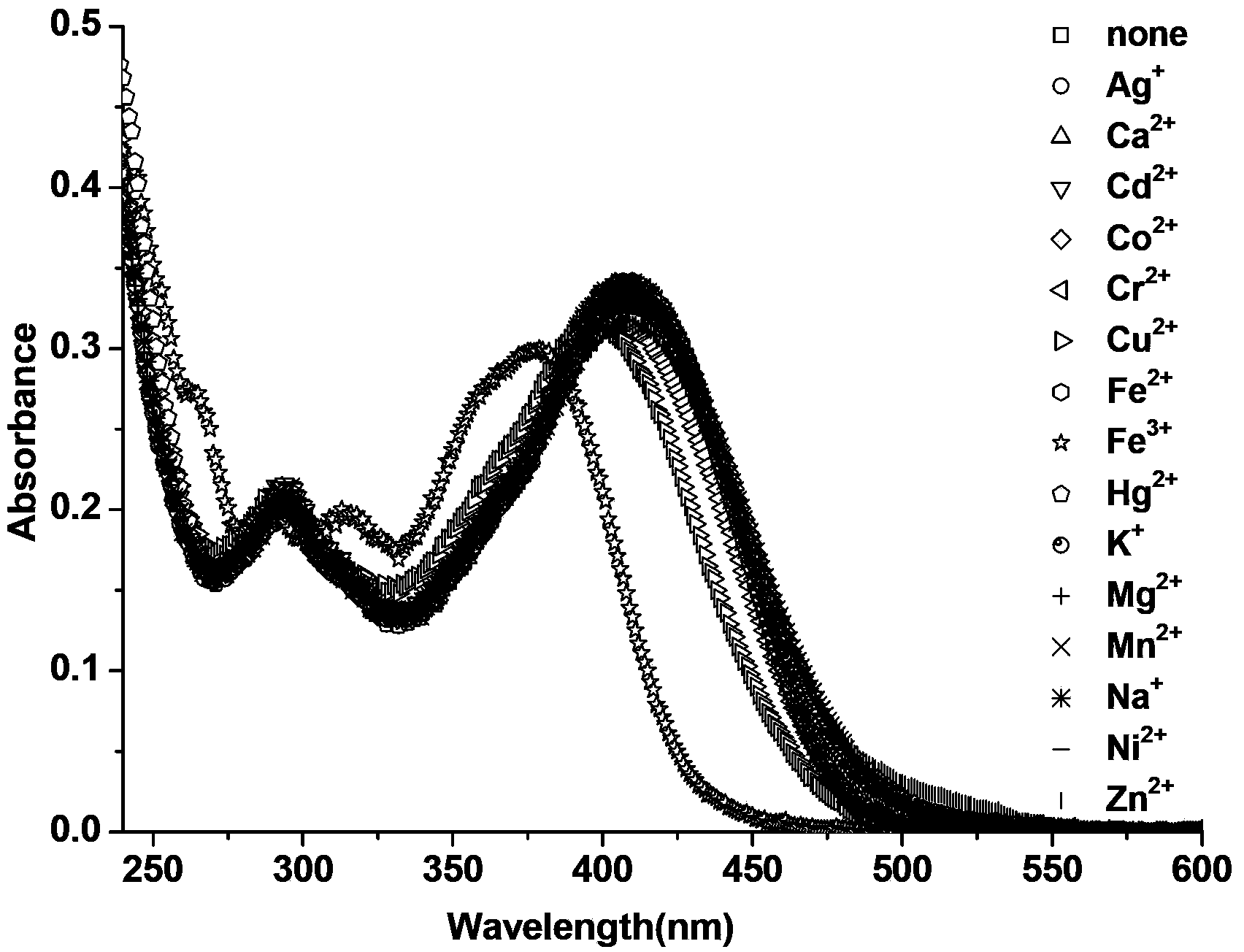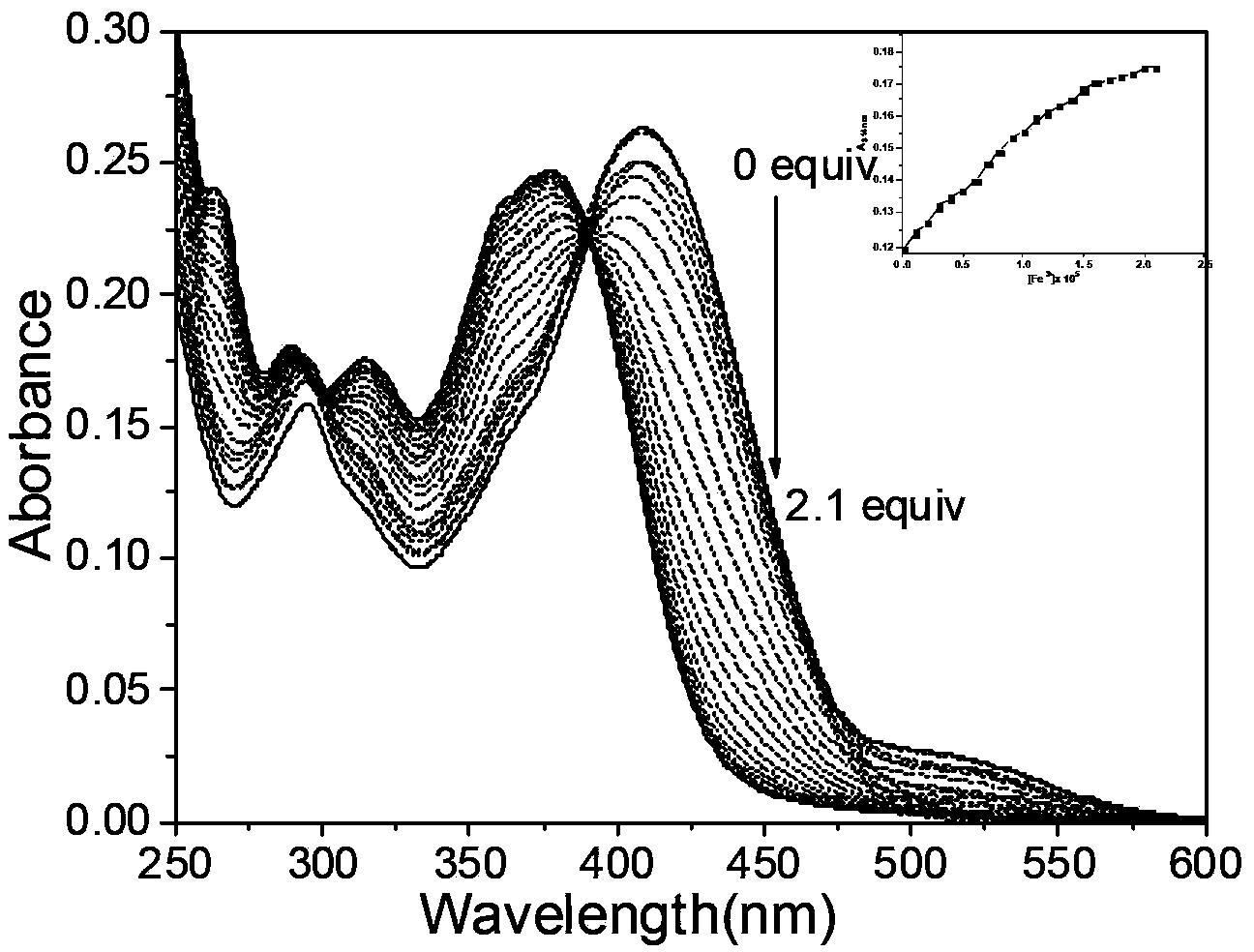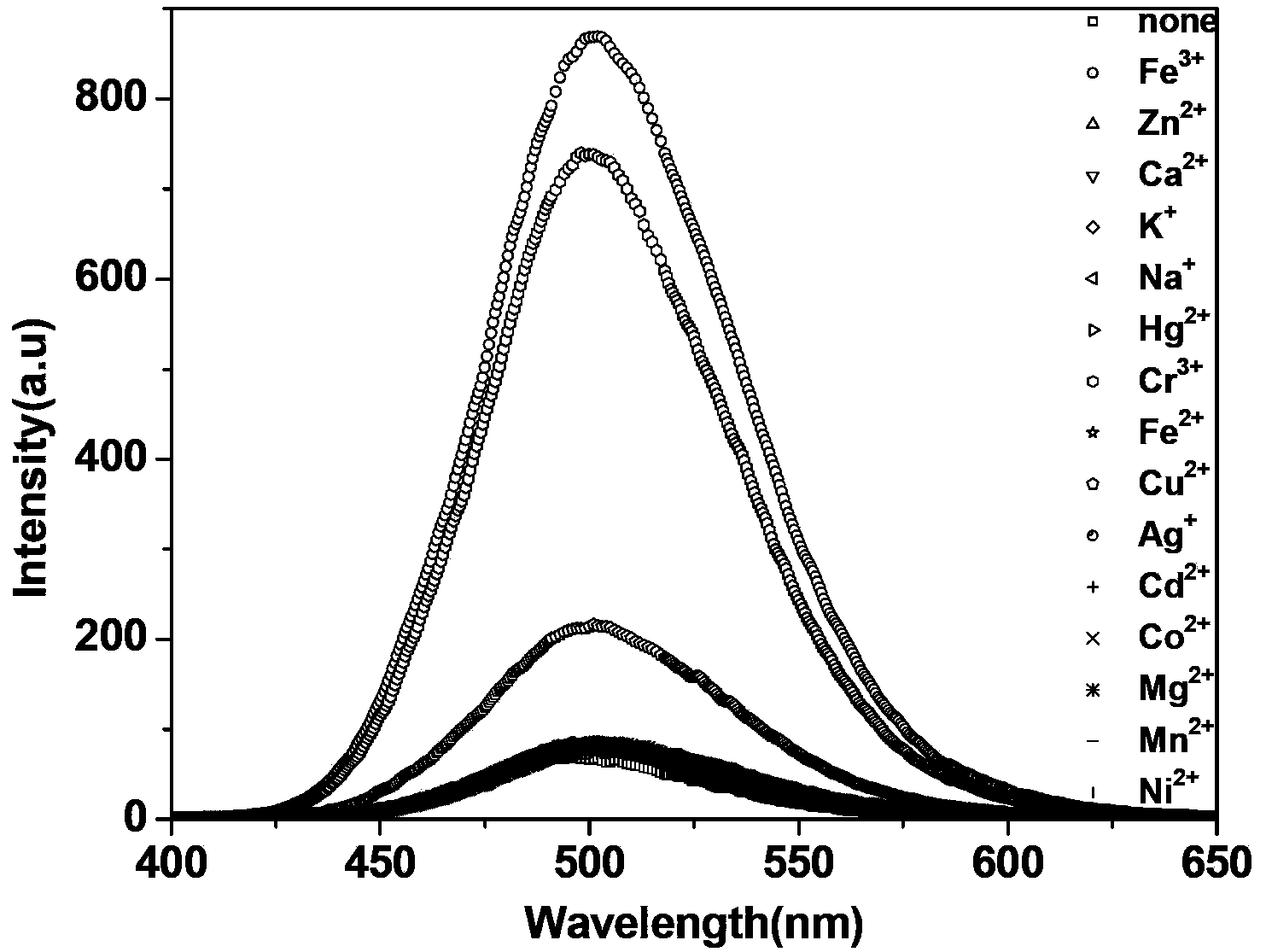Carbazole-thiophene schiff base fluorescent probe compound for detecting and recognizing Fe<3+> and Cr<3+>
A technology of thienyl Schiff bases and fluorescent probes, applied in organic chemistry, fluorescence/phosphorescence, luminescent materials, etc., can solve problems such as high cost, poor reagent selectivity, and complex equipment, and achieve naked-eye recognition and colorimetry The effect of the analysis
- Summary
- Abstract
- Description
- Claims
- Application Information
AI Technical Summary
Problems solved by technology
Method used
Image
Examples
Embodiment 1
[0020] Embodiment 1: Synthesis of Schiff base compound (L)
[0021] In a 100mL round bottom flask, add 2.5g (10mmol) 3-formyl-9H-hexylcarbazole, 1.78g (10mmol) NBS, 0.05gBPO, dissolve with 20mL DMF, reflux at room temperature for 48h in the dark, wash with a large amount of water, Milky white and dark yellow oily liquid, extracted with dichloromethane, combined organic phases and washed with anhydrous MgSO 4 Dry, suction filter the next day, spin dry the organic phase, dissolve the product with a small amount of dichloromethane, add a small amount of silica gel, and separate through a silica gel column (petroleum ether: ethyl acetate = 10:1) to obtain 3-bromo-9H-hexyl Carbazole (1), the product is 2.53g yellow liquid, the yield is about 76.67%.
[0022] Weigh 0.94 g (6 mmol) of 2-formyl 5-boronic acid thiophene and 0.04 g tetrakistriphenylphosphine palladium in a three-necked flask, vacuumize, and fill with N 2 For protection, take 2.0mL 3-bromo-9H-hexylcarbazole (1), 40mL D...
Embodiment 2
[0024] Embodiment 2: the ultraviolet-visible absorption spectrometry of compound L
[0025] Accurately weigh 2.5 mg of compound L, dissolve and prepare to a concentration of 0.5×10 -3 mol / L acetonitrile stock solution, accurately pipette the stock solution and dilute to a concentration of 1.0×10 -5 mol / L of the solution to be tested. Take 3mL concentration as 1.0×10 -5 mol / L of the sample to be tested in a quartz cuvette (the thickness of the quartz cuvette is 1cm), and then add 30μL of the concentration of 1.0×10- 3 mol / L of various metal ions (Na + , K + , Ag + , Ca 2+ , Mg 2+ , Mn 2+ , Cd 2+ , Cr 3+ , Cu 2+ , Ni 2+ ,Co 2+ , Fe 3+ , Fe2+ , Hg 2+ ) solution, shake well, and measure the UV-Vis absorption spectrum of the solution after 30 seconds (as shown in the accompanying drawing figure 1 shown). Before adding metal ions, the UV-Vis absorption spectrum of L showed two clear absorption peaks at 293nm and 410nm, when adding Fe 3+ After ions, the absorption p...
Embodiment 3
[0026] Embodiment 3: the determination of the ultraviolet-visible absorption spectrometry titration experiment and detection limit of compound L
[0027] Take 3mL concentration as 1.0×10 -5 The acetonitrile solution of mol / L compound L was placed in a quartz cuvette, each time adding 3 μL, the concentration was 1.0×10 -3 mol / LFe 3+ Ionic acetonitrile solution, shake well, and measure the UV-visible absorption spectrum of the solution after equilibration (as shown in the accompanying drawing figure 2 shown). With Fe 3+ With the addition of ions, the absorbance of compound L at 293nm gradually increased, and the absorption peak gradually blue-shifted, while the absorbance at 410nm gradually weakened and gradually blue-shifted, until the absorption peak at 410nm blue-shifted to 376nm. Compound L can react with Fe in acetonitrile solution 3+ The ions form a stable complex, and a new absorption peak appears at 314nm, Fe 3+ ions at 1.0 x 10 -6 ~1.3×10 -5 In the range of mol...
PUM
 Login to View More
Login to View More Abstract
Description
Claims
Application Information
 Login to View More
Login to View More - R&D
- Intellectual Property
- Life Sciences
- Materials
- Tech Scout
- Unparalleled Data Quality
- Higher Quality Content
- 60% Fewer Hallucinations
Browse by: Latest US Patents, China's latest patents, Technical Efficacy Thesaurus, Application Domain, Technology Topic, Popular Technical Reports.
© 2025 PatSnap. All rights reserved.Legal|Privacy policy|Modern Slavery Act Transparency Statement|Sitemap|About US| Contact US: help@patsnap.com



